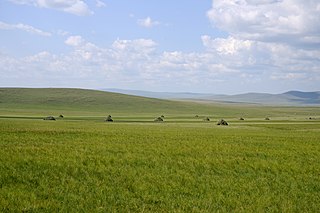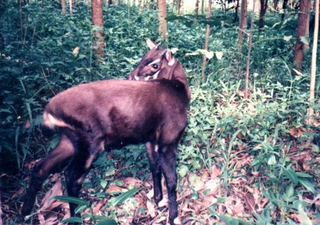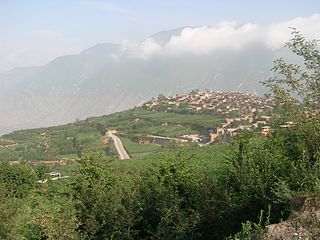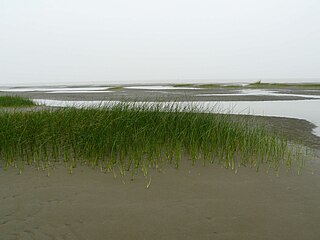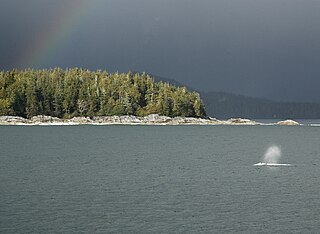
China Biosphere Reserve Network (CBRN) is a network established by the Chinese National Committee for UNESCO Man and the Biosphere Programme in 1993. Membership in the CBRN serves as a prerequisite for joining the World Network of Biosphere Reserves (WNBR). At present there are 191 members in the CBRN, including 34 UNESCO Biosphere Reserves.
Note: "China Biosphere Reserve" is a nominal designation granted to the member reserves.
- Beijing (2)
- Tianjin (2)
- Hebei (4)
- Shanxi (3)
- Inner Mongolia (23)
- Xilingol Steppe National Nature Reserve (WNBR)
- Saihan Ul National Nature Reserve (WNBR)
- Hulunhu National Nature Reserve (WNBR, as "Dalai Lake")
- Bayan Obo National Nature Reserve
- Heilihe National Nature Reserve
- Daheishan National Nature Reserve
- Horqin National Nature Reserve
- Xi Ordos National Nature Reserve
- Nei Mongol Helanshan National Nature Reserve
- Nei Mongol Darbin Hu National Forest Park
- Nei Mongol Huanggangliang National Forest Park
- Dal Nur National Nature Reserve
- Gogastai Han Ul National Nature Reserve
- Temeji National Nature Reserve
- Huihe National Nature Reserve
- Honggolj Mongolian Scots Pine Forest National Nature Reserve
- Da Hinggan Ling Hanma National Nature Reserve (WNBR)
- Alxa Bactrian Camel National Conservation Area
- Inner Mongolia Cashmere Goat (Alxa Type) National Conservation Area
- Gurgastai National Nature Reserve
- Ergun National Nature Reserve
- Bilahe National Nature Reserve
- Daqingshan National Nature Reserve
- Liaoning (5)
- Jilin (5)
- Heilongjiang (10)
- Fenglin National Nature Reserve (WNBR)
- Wudalianchi National Nature Reserve (WNBR)
- Zhalong National Nature Reserve
- Xingkaihu National Nature Reserve (WNBR)
- Liangshui National Nature Reserve
- Huzhong National Nature Reserve
- Wuyiling National Nature Reserve
- Cuibei Wetland National Nature Reserve
- Honghe National Nature Reserve
- Zhenbaodao Wetland National Nature Reserve
- Shanghai (2)
- Jiangsu (3)
- Zhejiang (7)
- Tianmushan National Nature Reserve (WNBR)
- Nanji Liedao Marine National Nature Reserve (WNBR)
- Lin'an Qingliangfeng National Nature Reserve
- Shangougou scenic zone of Jingshan (Shangougou) National Forest Park
- Qianjiangyuan park area of Qianjiangyuan - Baishanzu National Park pilot site
- Xianju National Park (note: not a component of the National Park System of China)
- Baishanzu park area of Qianjiangyuan - Baishanzu National Park pilot site
- Anhui (4)
- Fujian (7)
- Jiangxi (7)
- Shandong (3)
- Henan (6)
- Hubei (6)
- Shennongjia National Nature Reserve (WNBR)
- Changjiang Tian'ezhou Whitefin Dolphin National Nature Reserve
- Whitefin Dolphin National Nature Reserve at Xinluo Section of Yangtze River
- Wufeng Houhe National Nature Reserve
- Dalaoling National Nature Reserve
- Hewangmiao Yangtze Finless Porpoise Provincial Nature Reserve
- Hunan (3)
- Guangdong (17)
- Dinghushan National Nature Reserve (WNBR)
- Nanling National Nature Reserve
- Chebaling National Nature Reserve (WNBR) *
- Neilingdingdao - Futian National Nature Reserve
- Huidong Gangkou Sea Turtles National Nature Reserve
- Shenzhen CAS Xianhu Botanical Garden
- Zhujiangkou Chinese White Dolphin National Nature Reserve
- Leizhou Valuable and Rare Marine Organisms National Nature Reserve
- Shixing Nanshan Provincial Nature Reserve
- Xiangtoushan National Nature Reserve
- Zhanjiang Mangrove Forest National Nature Reserve
- Danxiashan National Nature Reserve
- Xuwen Coral Reef National Nature Reserve
- Leizhou Wushi National Marine Park
- Nanpeng Liedao National Nature Reserve
- Nanxiong Xiaoliukeng - Qingzhangshan Provincial Nature Reserve
- Zhuhai Qi'ao-Dangandao Provincial Nature Reserve
- Guangxi (12)
- Shankou Mangrove Ecosystem National Nature Reserve (WNBR)
- Damingshan National Nature Reserve
- Huaping National Nature Reserve
- Mao'ershan National Nature Reserve (WNBR)
- Beilunhekou National Nature Reserve
- Longgang National Nature Reserve
- Dayaoshan National Nature Reserve
- Mulun National Nature Reserve
- Jiuwanshan National Nature Reserve
- Hepu Yingpangang - Yingluogang Dugong National Nature Reserve
- Yachang Orchid Plants National Nature Reserve
- Chongzuo White-headed Black Langur National Nature Reserve
- Hainan (4)
- Sichuan (13)
- Wolong National Nature Reserve (WNBR)
- Jiuzhaigou National Nature Reserve (WNBR)
- Huanglongsi Provincial Nature Reserve (WNBR)
- Yading National Nature Reserve (WNBR)
- Tangjiahe National Nature Reserve
- Changning Zhuhai National Nature Reserve
- Miyaluo Provincial Scenic and Historic Area
- Longxi - Hongkou National Nature Reserve
- Dongyanggou Provincial Nature Reserve
- Maozhai Provincial Nature Reserve
- Micangshan National Nature Reserve
- Xuebaoding National Nature Reserve
- Baiyang Provincial Nature Reserve
- Guizhou (10)
- Fanjingshan National Nature Reserve (WNBR)
- Maolan National Nature Reserve (WNBR)
- Xishui Mid-subtropical Evergreen Broad-leaved Forest National Nature Reserve
- Chishui Spinulose Tree Fern National Nature Reserve
- Mayanghe National Nature Reserve
- Weining Caohai National Nature Reserve
- Leigongshan National Nature Reserve
- Kuankuoshui National Nature Reserve
- Dashahe National Nature Reserve
- Fodingshan National Nature Reserve
- Yunnan (5)
- Tibet (1)
- Shaanxi (10)
- Foping National Nature Reserve (WNBR)
- Taibaishan National Nature Reserve
- Changqing National Nature Reserve
- Hanzhong Crested Ibis National Nature Reserve
- CAS Shaanxi Qinling Botanical Garden
- Niubeiliang National Nature Reserve (WNBR)
- Tianhuashan National Nature Reserve
- Pingheliang National Nature Reserve
- Hancheng Huanglongshan Brown Eared-Pheasant National Nature Reserve
- Hualongshan National Nature Reserve
- Gansu (5)
- Qinghai (1)
- Ningxia (2)
- Xinjiang (9)
- Chinese Temperate Desert Region and the North Foot of Bogda Peak Biosphere Reserve (WNBR)
- Altun Shan National Nature Reserve
- Hanas National Nature Reserve
- Tarim Euphrates Poplar National Nature Reserve
- Qitai Desert Type Grassland Autonomous Regional Nature Reserve
- Middle Tianshan Künes Mountain-Meadow Type Grassland Autonomous Regional Nature Reserve
- Altai Shan Liangheyuan Autonomous Regional Nature Reserve
- Bulgan He Eurasian Beaver National Nature Reserve
- Karameili Shan Wild Ungulates Autonomous Regional Nature Reserve
